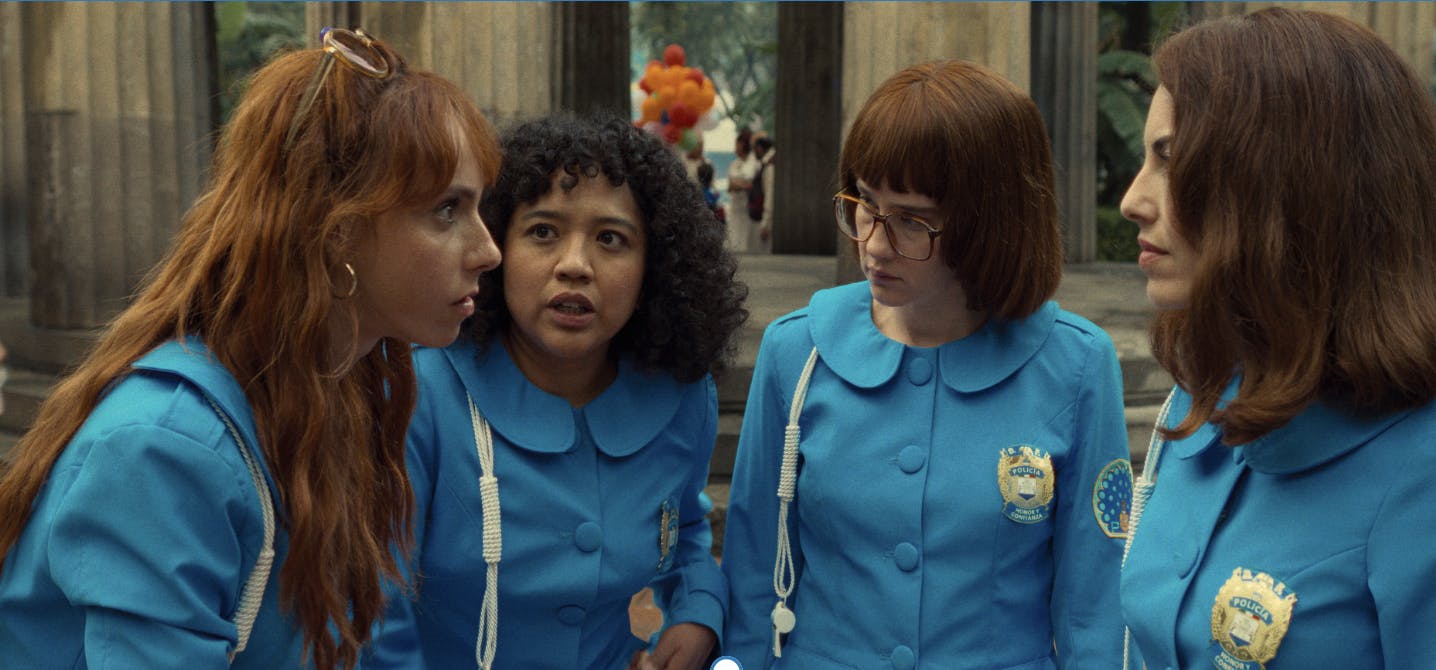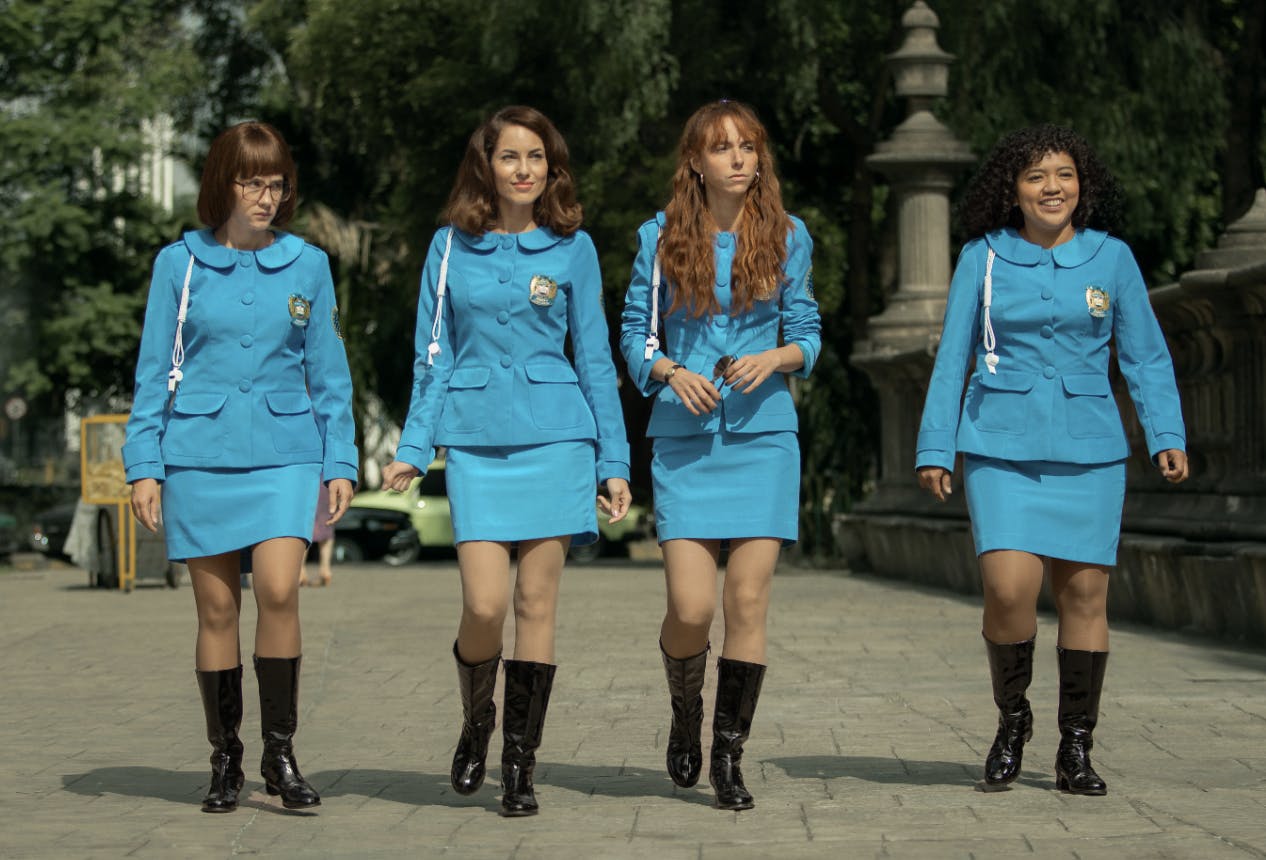Last week, Women in Blue (also airing as Las Azules) premiered on Apple TV’s streaming service. The show is based on true events from 1971, when four women defy ultraconservative norms to join Mexico’s first female police force, only to discover it’s a publicity stunt to distract the media from a serial killer. The series follows these women as they make a pact to bring the killer to justice while navigating their personal lives and the challenges of being working women.
Emmy-winning director Fernando Rovzar, along with the women in blue Maria (Bárbara Mori), Angeles (Ximena Sariñana), Valentina (Natalia Téllez), and Gabina (Amorita Rasgado), sat down with us to give the Daily Dot insights into the new series.
Daily Dot: How true to life is the show?
Fernando Rovzar: Most of what we have researched is from them like we got into contact with one, and then she got in contact with another one, and then we managed to go to lunch, and we were talking, and then we recorded them, and they told us their stories, you know, within with families and with their parents and with a lot of them were teenagers when they joined the police.
DD: Describe the show using only emojis.
Natalia Téllez: Hearts, flowers, fire, lots of fire.
FR: I would put the little emojis of the of the little, you know, the little women.
NT: Girls! Having these two girls, hand to hand, dancing.
Bárbara Mori: Like an arm.
Ximena Sariñana: Yeah, exactly. Firearm. A plastic firearm. Yeah, for sure.
BM: And blue, blue heart.
XS: And I would definitely think the one with the two girls holding hands
Amorita Rasgado: A surprised face like going like this!

FR: Four blue hearts is also a fantastic way to represent the show. Whenever I text the azules, we have a chat with them, and oftentimes we put four hearts.
DD: If there were social media in the ‘70s, what do you think your character post?
XS: I think my character would talk about a lot about being in the autism spectrum, and I think she would probably do a lot of work on making other people conscious about it, and, you know, stating a lot of facts, because, you know, she’s a very fact driven character.
BM: I think she will post, you know, recipes and about being a mom. And you know, she joined the police force, she started changing, she started realizing that she is more capable to do so many things that she didn’t even think about.

DD: Why did the women police officers have mini skirts as part of their uniform when they were allowed to pants during training?
FR: When these women joined the police, they thought they’d be wearing police uniforms, and when they graduated, it wasn’t until they graduated that they were given skirts and knee-high boots. And this was they made it impossible for them to run, made it impossible for them to, you know, to do a lot of police work. And that’s when they sort of realized that the entire Mexico City female police department was sort of like a like a ploy, like a window dressing by a government that wanted people to stop talking about with the worst massacre of student protesters in history, which happened in 1968.
DD: What advice would you give people who feel unappreciated at work?
NT: One of the most important premises of Las Azules of these women in blue is that they make a network. They make this connection of women who are feeling the same and who are pursuing the same objective.
DD: Why was this story important to tell?
FR: I’m the son of a hard-working woman who raised us and worked at the same time. It’s important for me because I have two teenage daughters who are experiencing adulthood in Mexico City, in a country where 10 women are murdered every single day because they are women; it’s important to me because nobody in Mexico knows that this that this group of policewomen existed.
Internet culture is chaotic—but we’ll break it down for you in one daily email. Sign up for the Daily Dot’s web_crawlr newsletter here. You’ll get the best (and worst) of the internet straight into your inbox.


